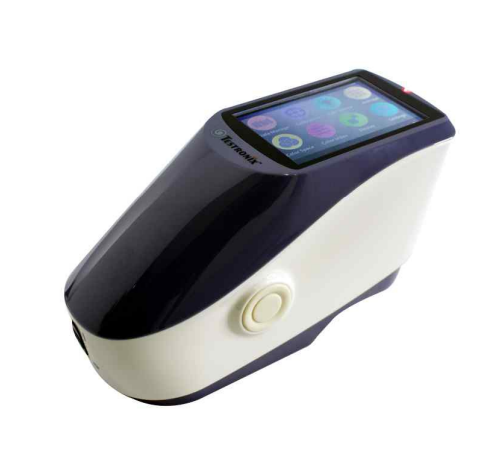

If you've ever wondered how scientists measure the concentration of a substance in a solution without even touching it — the answer often lies in a powerful instrument called a spectrophotometer.
This tool is widely used in laboratories, research facilities, and industries to detect how much light a substance absorbs. From measuring protein concentration in biology labs to testing water quality in environmental setups — the spectrophotometer uses are broad and essential.
In this blog, we’ll break down everything you need to know about this device — its working principle, a simple diagram, types, practical applications, and even current spectrophotometer prices in the market.
A spectrophotometer is a scientific instrument that measures how much light a substance absorbs. The more light a substance absorbs, the higher its concentration. The idea is simple:- different substances absorb light differently at different wavelengths, and that can be used to identify and measure them.

It’s a go-to tool in labs for a reason — it gives accurate, repeatable results and is fairly easy to operate once you get the hang of it.
The principle of a spectrophotometer is based on the Beer-Lambert Law, which links light absorption to concentration.
In simple words:
The more concentrated a solution is, the more light it will absorb.
Formula:
A = εlc
Where:
So, by measuring how much light is absorbed, we can find out how much of a substance is present.
Here’s a simple spectrophotometer diagram showing the basic components:
[Light Source] → [Monochromator] → [Sample Cuvette] → [Detector] → [Display]

Step-by-step working:
The detector then converts this signal into data that tells you the concentration of the substance in your sample.
There’s no one-size-fits-all when it comes to spectrophotometers. Here’s a quick comparison of the major types:
| Type | Wavelength Range | Common Uses |
| UV-Visible Spectrophotometer | 190–1100 nm | DNA/protein analysis, water testing |
| Visible Spectrophotometer | 400–700 nm | Color testing in beverages, food, etc. |
| Infrared Spectrophotometer | 700–2500 nm | Identifying chemical bonds in materials |
| Atomic Absorption Spectro. | ~190–900 nm | Trace metal testing in water and food |
| Double Beam Spectrophotometer | 190–1100 nm (split) | Advanced, high-precision lab analysis |
Each type is suited for a specific application depending on the range of light and the material you want to test.
So, what are the spectrophotometer uses in laboratories and beyond?
Here’s how it's used across different fields:
It's truly one of the most versatile lab instruments available.
The spectrophotometer Price is based on its type, features, and precision. The basic models for routine testing to advanced systems for high-end analysis, options are available for every need. Choose the right model based on your application, and get expert guidance for the best value and performance. If you want to know the exact price, feel free to call us at the number provided on the website for expert assistance.
Presto Stantest is a trusted name in testing instruments, offering reliable, accurate, and easy-to-use spectrophotometers at competitive prices.
Q1. What is the main use of a spectrophotometer in a lab?
Ans: It’s mainly used to determine the concentration of substances in a solution by measuring how much light is absorbed at a certain wavelength.
Q2. What’s the difference between UV and visible spectrophotometers?
Ans: UV models cover a broader wavelength range (190–1100 nm), allowing for more advanced analysis. Visible ones focus only on the 400–700 nm range and are ideal for colorimetric tests.
Q3. Is spectrophotometry accurate for low concentrations?
Ans: Yes, especially with UV-Vis models. They can detect even tiny amounts if calibrated correctly.
Q4. Can it be used for solids or just liquids?
Ans: Mostly for liquids, but some spectrophotometers support attachments for solid samples and powders.
Q5. How often should a spectrophotometer be calibrated?
Ans: Ideally, before every major experiment or at least once a week in routine lab use to ensure accuracy.
A spectrophotometer is one of those instruments you find in almost every lab — and for good reason. It’s fast, reliable, and incredibly versatile.
From detecting how pure your water sample is to checking the quality of medicines or the protein content in a DNA sample — spectrophotometry is the backbone of modern analysis. And with different models available for various budgets and applications, it's a tool worth investing in.
Get expert advice and know the right Spectrophotometer Price for your needs.
Call:- +91 9210 903 903
Email:- info@prestogroup.com
Reliable solutions, quick support—only at Presto!
Related Blogs

Cyclic Salt Spray Testing Machine explained with diagram, test cycles, working process, and industrial applications. Learn how cyclic corrosion testing ensures product durability and compliance.

"Improve paper quality testing accuracy by up to 85% with a Cobb Tester. Reliable, fast, and essential for packaging and paper manufacturing quality control."

Prevent product failures with torque testers that ensure accurate and consistent tightening force for optimal performance.